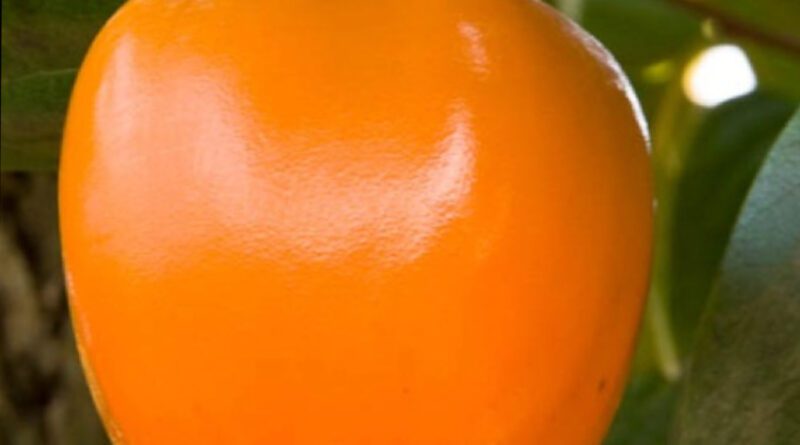Caquis Persimon: The Sweet Fruit You Need to Try
Introduction
Have you ever heard of This delicious, bright-orange fruit is winning hearts around the world with its natural sweetness, smooth texture, and amazing health benefits. Native to Spain, it has quickly become a favorite in kitchens, restaurants, and even health stores.
What makes caquis persimon so special is its unique taste—a mix of honey, mango, and apricot—wrapped in a beautiful, glossy skin. Unlike other persimmons that must ripen until soft, this variety can be eaten while still firm, making it perfect for salads, desserts, and snacks.
In this article, we’ll explore everything you need to know about —from its origin and cultivation to nutritional value, benefits, recipes, and FAQs. Let’s dive into the sweet world of this golden treasure!
What is Caquis Persimon?
is a special type of persimmon grown mainly in Spain’s Valencia region. It belongs to the species Diospyros kaki and is often called the “Spanish persimmon.” Unlike the traditional soft persimmons, this one can be eaten when firm, making it versatile and easier to handle.
It was developed through careful agricultural practices to remove the strong astringent taste found in other persimmons. This makes the fruit sweet, smooth, and ready to eat.
The Origin and History of Caquis Persimon
The story begins in Valencia, Spain, where farmers wanted to create a unique fruit that would stand out in European and international markets. Through innovation, they found a way to grow a non-astringent persimmon with firm flesh and rich flavor.
Over time, this fruit gained Protected Denomination of Origin (PDO) status under the name “Kaki Ribera del Xúquer.” Today, it is exported to different parts of the world and enjoyed by millions.
Nutritional Value of Caquis Persimon
One of the biggest reasons why people love is its rich nutritional profile.
Key Nutrients:
- Vitamin A – Supports eye health
- Vitamin C – Boosts immunity
- Fiber – Aids digestion
- Potassium – Regulates blood pressure
- Antioxidants – Fights free radicals
Nutritional Facts (per 100g of caquis persimon):
- Calories: 70–80 kcal
- Carbohydrates: 18g
- Fiber: 3g
- Vitamin C: 12% of daily needs
- Vitamin A: 8% of daily needs
This makes the fruit not only tasty but also a great option for a healthy diet.
Health Benefits of Eating Caquis Persimon
Eatingregularly can improve your overall well-being. Here are the top benefits:
1. Boosts Immunity
Thanks to its vitamin C content, it helps protect against colds, flu, and infections.
2. Improves Digestion
The fiber keeps your stomach happy and prevents constipation.
3. Supports Heart Health
Rich in potassium and antioxidants, it lowers bad cholesterol and protects your heart.
4. Good for Skin & Eyes
Vitamin A and antioxidants slow down aging and keep your skin glowing.
5. Helps in Weight Management
Low in calories and high in fiber, keeps you full without adding extra weight.
How to Eat Caquis Persimon
The beauty of lies in its versatility. You can enjoy it in many ways:
- Eat it raw like an apple
- Slice it into fruit salads
- Blend into smoothies
- Bake into cakes or muffins
- Use as topping for yogurt or cereal
Tip: Wash it well, cut into slices, and eat with or without the skin.
Popular Recipes with Caquis Persimon
Here are some simple and tasty recipes:
1. Caquis Persimon Smoothie
Blend banana, and almond milk for a refreshing drink.
2. Persimon Salad
Mix rocket leaves, walnuts, feta cheese, and persimon slices for a sweet-salty salad.
3. Persimon Tart
Bake persimon slices on puff pastry with honey drizzle for a delightful dessert.
Caquis Persimon vs Other Persimmons
Not all persimmons are the same. Let’s compare:
| Feature | Caquis Persimon | Traditional Persimmon |
| Texture | Firm & crisp | Soft & jelly-like |
| Taste | Sweet, mild | Sweet but sometimes astringent |
| Ripening | Can eat firm | Must ripen fully |
| Origin | Spain | Asia (Japan, China) |
This comparison shows why is easier to handle and more appealing to international consumers.
Caquis Persimon in Global Markets
Today, Spain exports to the UK, Germany, France, and even parts of Asia. Its popularity continues to rise because of its long shelf life, unique taste, and versatility in recipes.
Sustainability and Farming Practices
Farmers in Valencia use eco-friendly farming methods to grow . Many follow organic practices to ensure the fruit is free from harmful chemicals. This makes it a healthier choice for consumers and a sustainable option for the environment.
Buying and Storing Caquis Persimon
- Buy fruits that are bright orange and firm.
- Store them at room temperature for a few days.
- For longer storage, keep them in the refrigerator.
They can last up to 2 weeks when stored properly.
FAQs about Caquis Persimon
Q1: Is caquis persimon the same as persimmon?
A: Not exactly. It is a special Spanish variety of persimmon that can be eaten firm.
Q2: Can you eat the skin of caquis persimon?
A: Yes, the skin is edible, just like an apple.
Q3: When is caquis persimon in season?
A: It is usually harvested from October to January.
Q4: Is it good for diabetics?
A: It has natural sugars, so it should be eaten in moderation by diabetics.
Q5: How do you know if caquis persimon is ripe?
A: It should be firm but not too hard, with a glossy orange skin.
Conclusion
The caquis persimon is more than just a fruit—it’s a healthy, tasty, and versatile gift from Spain to the world. Its firm texture, natural sweetness, and nutritional value make it a must-have in every household. Whether you eat it raw, add it to salads, or use it in desserts, it’s a fruit that satisfies both taste buds and health goals.
So next time you’re at the market, don’t miss out on this golden-orange delight. Add caquis persimon to your diet and enjoy the perfect blend of flavor, health, and tradition.
